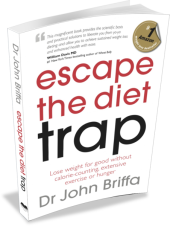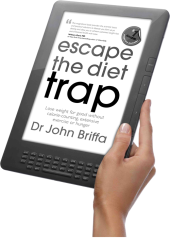Niacin is a form of vitamin B3 that has been long-known to reduce levels of ‘unhealthy’ LDL-cholesterol, while raising levels of ‘healthy’ HDL-cholesterol. It’s generally believed that these effects would translate into better outcomes in terms of cardiovascular issues such as heart attacks and strokes. As a result, niacin has a history of use for modifying cholesterol levels, particularly in those deemed to be at relatively high risk of cardiovascular problems.
However, the truly important thing is not the impact any drug or intervention has on cholesterol levels, but the impact it has on health. We could find that arsenic is fantastic at reducing LDL-cholesterol and raising HDL-cholesterol, but that wouldn’t make it an automatic good choice for our health, right?
Anyway, on the basis of its cholesterol-‘improving’ effects, niacin became an established therapy. And in 2008 the European Medicines Agency gave the green light to combination drug known as Tredaptive. This product contained niacin combined with another agent known as laropiprant, which had the ability to reduce the propensity for niacin to cause flushing (a common side effect of niacin that is generally experienced as heat and redness in the face and/or body).
Tredaptive was available in dozens of countries, but in January of this year its manufacturers (Merck) announced that it was being withdrawn. This week saw the presentation of the results of a study on Tredaptive that explains the withdrawal.
The study involved more than 25,000 people who had a previous history of cardiovascular disease (such as a previous heart attack or stroke). All the individuals in the study were on cholesterol-reducing medication (the statin simvastatin with or without the drug ezetimibe). Individuals were randomised to get Tredaptive or placebo (dummy pill). The average length of treatment was about 5 years.
The addition of Tredaptive was found to bring no benefits at all in terms of risk of heart attack, stroke or overall risk of death.
However, those taking Tredaptive were at increased risk of certain side effects including:
- bleeding
- infection
- diabetes
- diabetic complications in those with diabetes
- muscle damage (myopathy)
- gastrointestinal symptoms
- rashes
In summary, Tredaptive clearly did significantly more harm than good.
Here’s a video of one of the study’s chief investigators, Professor Jane Armitage from the University of Oxford, talking about this study and its findings.
The results of this study are yet another reminder of the inescapable fact that we cannot judge the value of a drug based on its impact on cholesterol – we need to know the effect it has on health. All too often, we find that the supposed benefits of a drug do not materialise in reality. And sometimes, we find the results are actually far worse than doing nothing.[hr]
[box style=”rounded” border=”full”]
Dr John Briffa’s best-selling ESCAPE THE DIET TRAP – lose weight without calorie-counting, extensive exercise or hunger is now available in the US!
“This magnificent book provides the scientific basis and practical solutions to liberate you from yo-yo dieting and allow you to achieve sustained weight loss and enhanced health with ease.”
William Davis MD – #1 New York Times bestselling author of Wheat Belly
To read some of the dozens of 5-star reviews for this book [button link=”http://www.drbriffa.com/amazon-reviews-for-escape-the-diet-trap/” color=”silver” text=”dark” window=”yes”]click here[/button]

For more information and to buy print copy of the book [button link=”http://www.amazon.com/Escape-Diet-Trap-calorie-counting-extensive/dp/0957581602/” color=”orange” window=”yes”]click here[/button]

For more information and to buy the kindle version [button link=”http://www.amazon.com/dp/B00BLQ40QM” color=”orange” window=”yes”]click here[/button]
[/box]